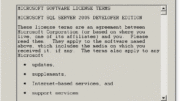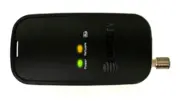In an era where the world is more interconnected than ever, the ability to establish seamless connections across various contexts has become paramount. Effective communication is the linchpin for success in business negotiations, diplomatic endeavors, or personal interactions. This article delves into the intricate web of strategies that contribute to seamless connections, with a specific focus on the role of interpreting equipment in enhancing communication.
Strategy 1: Advanced Communication Protocols
The foundation of seamless connections lies in advanced communication protocols. These protocols, which range from the basic Internet Protocol (IP) to more specialized ones, guarantee the seamless flow of data across various systems. The essay investigates how different protocols contribute to effective communication by allowing for real-time data transfer, preserving data integrity, and assuring secure exchanges. Understanding the subtleties of these protocols is critical for navigating the intricacies of today’s communication ecosystems.
As organizations and individuals increasingly rely on digital channels for communication, the need for rigorous procedures cannot be emphasized. The topic offers insights into how various protocols manage increased demands for bandwidth, scalability, and dependability, consequently playing a critical role in establishing and sustaining smooth connections.
Strategy 2: Real-Time Translation Technologies
Breaking down language barriers is a transformative aspect of seamless connections, and real-time translation technologies have emerged as powerful tools, particularly in the form of devices for simultaneous translation. These devices revolutionize communication by providing instantaneous language interpretation, fostering inclusivity and collaboration on a global scale.
Overview of Real-Time Translation Technologies
Real-time translation technologies encompass a diverse array of tools, ranging from mobile applications to dedicated hardware devices. Mobile apps, such as language translation apps on smartphones and tablets, offer on-the-go translation for individuals. These apps utilize cloud-based services and advanced algorithms to provide quick and accurate translations, making them accessible and convenient for everyday communication.
Benefits and Challenges Associated with Real-Time Translation Technologies
The benefits of these devices for simultaneous translation are vast. They empower individuals and organizations to engage in real-time conversations, breaking down language barriers that may hinder effective communication. In a business context, these devices facilitate smoother negotiations and collaborations between international partners, fostering a conducive environment for global business growth.
However, the utilization of real-time translation devices also comes with its set of challenges. Accuracy in translation remains a primary concern, especially when dealing with complex or specialized terminology. Additionally, the devices must navigate the intricacies of cultural nuances, ensuring that the context of the communication is accurately conveyed. The difficulty depends not just on language precision, but also on portraying the delicate cultural subtleties that are essential to a successful connection.
Strategy 3: Interconnected Devices and Internet of Things (IoT)
The increasing number of networked devices, as well as the Internet of Things (IoT), has altered the dynamics of data interchange and management. This strategy explores how IoT contributes to seamless connections by creating an ecosystem where devices communicate seamlessly. From smart homes to industrial applications, the interconnectedness of devices enhances efficiency and productivity.
Looking forward, the article contemplates potential future developments in IoT and their implications for communication. As more gadgets become integrated, the potential for seamless communication grows. However, factors like as data privacy, security, and standards are also studied to offer a holistic knowledge of the problems and possibilities presented by the IoT ecosystem.
Strategy 4: Cultural Sensitivity and Adaptability
Effective communication goes beyond language; it involves understanding and respecting cultural nuances. This strategy emphasizes the importance of cultural sensitivity in achieving seamless connections. By acknowledging and embracing cultural diversity, individuals and organizations can build bridges across different backgrounds, fostering mutual understanding.
The article outlines strategies for fostering cultural adaptability in communication. From cross-cultural training programs to the use of culturally aware communication tools, these strategies to empower individuals to navigate the intricacies of global communication successfully. Recognizing the impact of cultural context on communication is crucial for building trust and collaboration in diverse environments.
Strategy 5: Comprehensive Interpreting Equipment
Premier interpreting equipment plays a pivotal role in ensuring effective communication, especially in multilingual settings. This strategy provides a comprehensive overview of the interpreting equipment available in the market. From state-of-the-art simultaneous interpretation systems to portable devices, the article explores the features and capabilities that make these tools indispensable for seamless communication.
Considerations for choosing the right interpreting equipment for specific contexts are discussed in detail. Factors such as accuracy, versatility, ease of use, and integration with other communication technologies are explored. By investing in high-quality interpreting equipment, organizations can overcome language barriers and facilitate clear, concise, and culturally sensitive communication.
In conclusion, this article underscores the critical importance of seamless connections in an interconnected world. It provides a comprehensive overview of the explored strategies, from advanced communication protocols to real-time translation technologies, interconnected devices, cultural sensitivity, and premier interpreting equipment. By adopting and integrating these strategies, individuals and organizations can navigate the challenges of global communication successfully, fostering understanding and collaboration across diverse landscapes.





